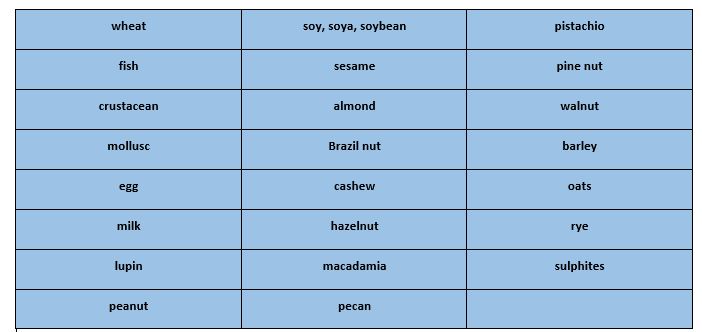In February 2021, new plain English allergen labelling (PEAL) requirements were introduced. These changes will mean food allergen information is clearer and easier to find on food labels.
Businesses have 3 years from 25 February 2021 to implement the new labelling requirements. During this transition period, food businesses can comply with either the existing allergen declaration requirements in the Code, or the new requirements in the Food Industry Guide to Allergen Management and Labelling (April 2021).
A 2 year stock-in-trade period (25 February 2024 to 24 February 2026) will follow the transition period. Any food packaged and labelled with existing allergen declarations before the end of the transition period may be sold for up to 2 years after the end of the transition period. All stock in trade from 25 February 2026 must be fully compliant to the new labelling requirements.
What must be declared
The food and ingredients listed below will need to be declared in the ingredient list when they are present using the exact name and in bolded text. For example cheese (milk) or milk powder.
The table below details the food and ingredients that must be declared.
Foods and ingredients to be declared (using these names)

A bolded, separate allergen summary statement starting with the word ‘contains’ will also need to be provided near the ingredient list to help quickly identify any allergens present. For example ‘Contains milk‘.
If the food is not in packaging or does not need to have a label, the information must be displayed with the food or can be requested from the supplier.

Eliza Gray
Senior Project Manager
HACCP Australia

